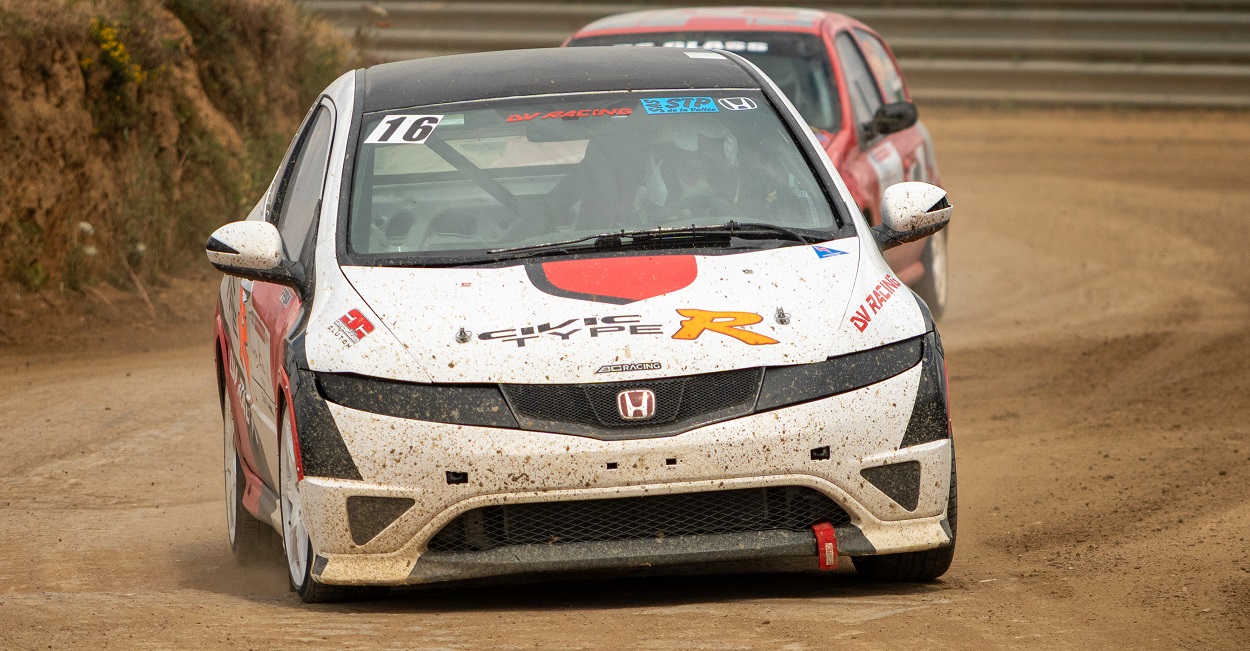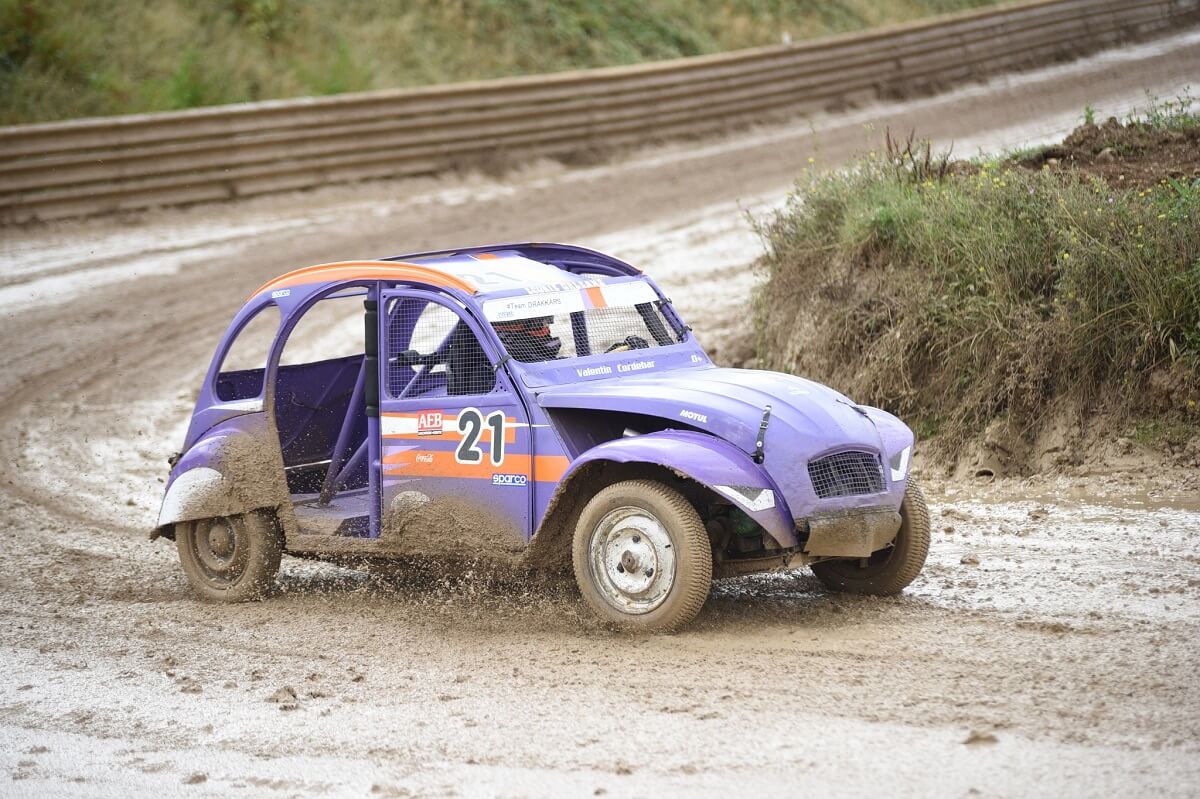Fol’Car: Dirt, Speed and Passion
By RobinB on 28 October 2025 Kartcross / Autocross / Fol'Car RallycrossAccessible, spectacular and friendly, Fol’Car is one of those disciplines that keeps the popular spirit of French motorsport alive 🎉
Born in the 1980s around the small village of Folembray in the Aisne region — which is where it gets its name — the formula quickly won over fans of car control and budget-friendly competitive motorsport.
Originally, Fol’Car was contested exclusively on 100% dirt circuits, as a natural extension of autocross. Over time, the discipline opened up to other layouts, and many events are now held on rallycross circuits, combining dirt and asphalt. This evolution hasn’t changed its DNA: cars close to production spec, a simple rulebook, and a relaxed, grassroots paddock atmosphere 🙂
Also read: "All you need to know about Autocross and Sprint Car in France"
Under the authority of the FFSA since 1990, the discipline today has its own official French Championship, promoted and coordinated by ASOCFFC (Association des Organisateurs du Championnat de France de Fol’Car). With its pack starts, short and intense races on dirt or mixed surfaces, and its budget-friendly format, Fol’Car offers a racing experience that’s intense, authentic and accessible 🔥
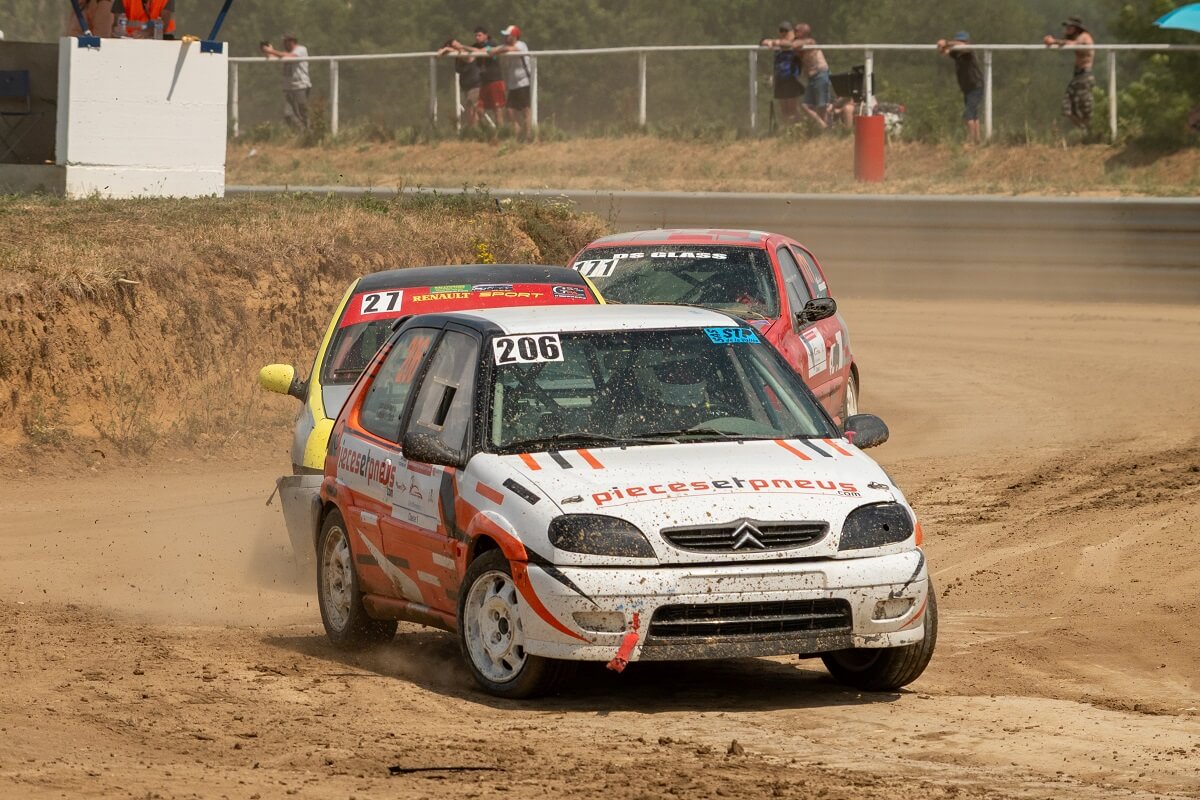
From its Picardy roots to a French Championship: the history of Fol’Car
Fol’Car was born in the early 1980s in the Aisne area, near the village of Folembray. Back then, a group of enthusiasts decided to improvise a 100% dirt track in a simple field. The spirit was completely amateur, almost wild: no tarmac, no infrastructure, just the pleasure of driving fast and sliding without destroying your road car.
The idea: race with lightly stripped production cars, with no intentional contact, on packed dirt. The name of the discipline came naturally from its birthplace: “Fol’Car”, a contraction of Folembray and car 👌
The concept quickly spread to nearby regions: Normandy, Picardy, Brittany and the Centre region. By the late 1980s, circuits like Essay, Lessay or Écouché had become iconic venues for Fol’Car.
In 1990, the discipline officially joined the world of the Fédération Française du Sport Automobile (FFSA). The FFSA then introduced a standardised technical and sporting rulebook to regulate the practice, while keeping its core philosophy: drive fast, push hard, but without breaking the bank.
After several decades run as a French Cup, the FFSA elevated it in 2020 to the French Fol’Car Championship, confirming the maturity and legitimacy of a discipline now fully established in the national motorsport landscape 💪
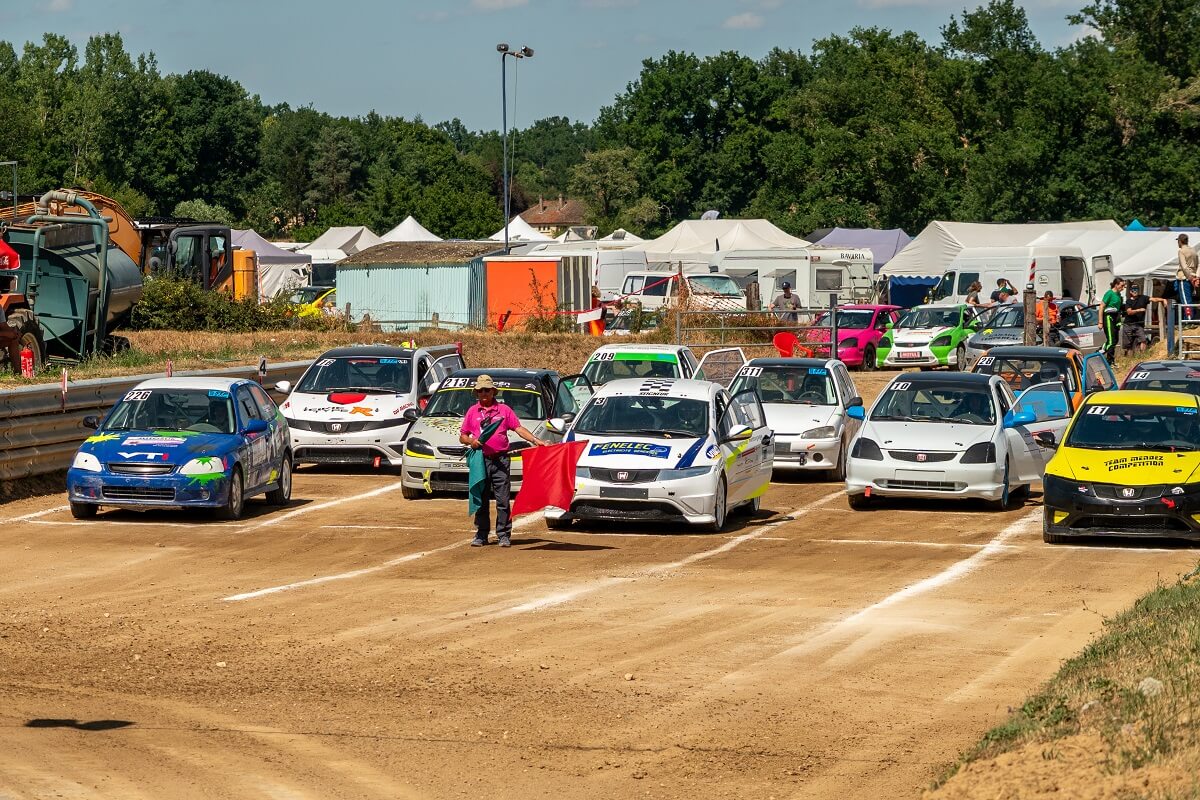
How does a Fol’Car race weekend work?
A Fol’Car weekend is pure action from start to finish 💥
The idea is simple: drivers go head to head on a closed circuit of about one kilometre, either 100% dirt — like in the early days — or a mixed dirt/asphalt layout on certain rallycross-style tracks 👍
Fol’Car races are authorised on Autocross circuits, Sprint Car tracks or Rallycross venues, which allows organisers to share infrastructure and offer varied layouts. Some purists do regret a slight loss of the original spirit, since Fol’Car used to run exclusively on dirt 😏
But in reality, drivers are increasingly fond of rallycross-style circuits: the infrastructure is more modern, more attractive for sponsors, and overall better suited to today’s cars, which are often more powerful and much cleaner than in the early days.
Also read: "How to Get Started in Rallycross in France?"
Starts are done in packs of up to fifteen cars, on staggered grids laid out in a 3-2-3-2 pattern. Racing lines constantly evolve lap after lap, switching between dusty slides and high-grip asphalt, giving each heat a character that’s spectacular and unpredictable 😎
ℹ️ Unlike rallycross, the joker lap is not mandatory at every round. In 2025, for example, three rounds of the French Championship will run with no joker lap at all. When a joker lap is used, each driver must take it once per heat: it’s a slightly longer loop that adds a strategic layer to the race.
But unlike in rallycross, Fol’Car drivers do not have onboard radio or a spotter on the outside of the track to tell them when to take it. So they have to manage strategy by themselves, watching the traffic, the race situation and how the surface evolves. This is part of what makes the discipline instinctive and a great school for driving.
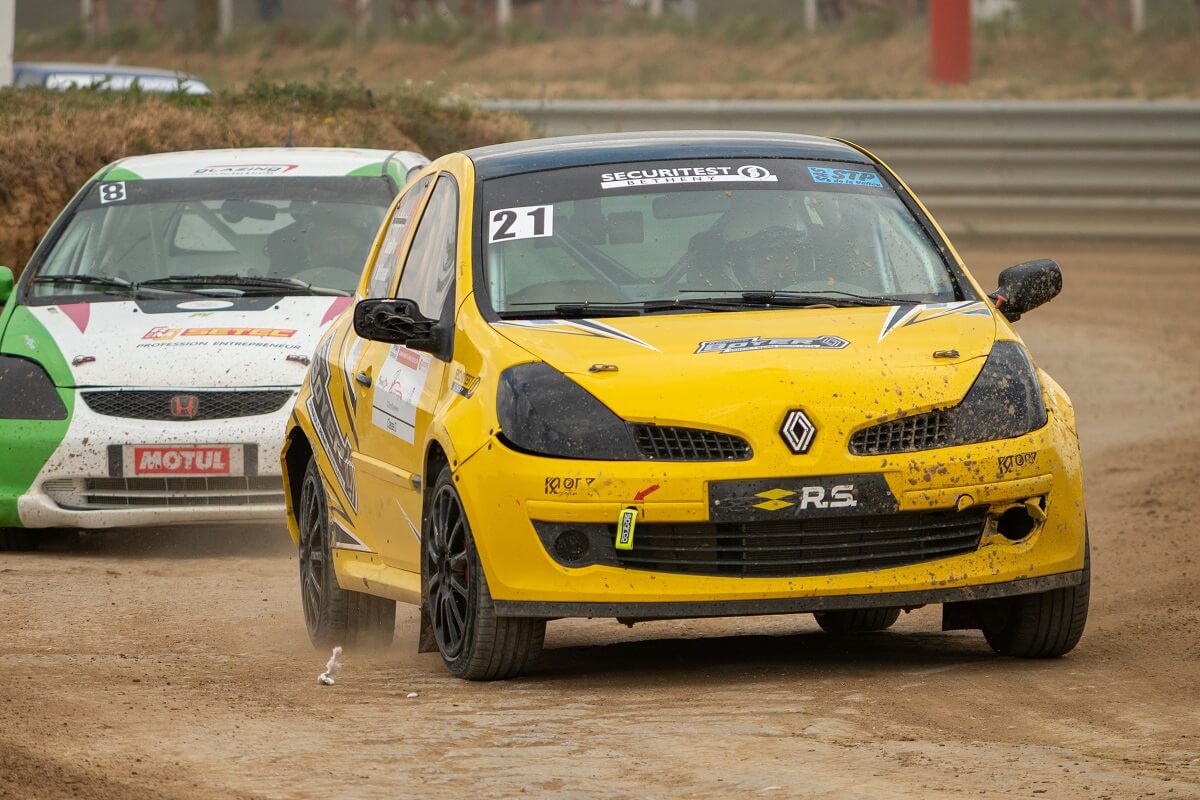
Practice, heats and finals: how a Fol’Car meeting runs
The race format is defined by the FFSA Fol’Car 2025 General Regulations 📜
In theory, an event can be held in a single day if the maximum number of entries is 75 cars or fewer, and over two days above that.
In practice, all rounds of the French Championship now run over two days, most of them paired with 2CV Cross. Running both series together allows organisers to share infrastructure (marshals, safety crews, paddock facilities) and to offer a full weekend of track action for both drivers and spectators.
Also read: "Driving a 2CV on dirt tracks: inside the world of 2CV Cross"
Scrutineering and practice
Each meeting begins with the administrative and technical checks, which are mandatory to confirm that the cars and safety equipment comply with the rules.
Then come free practice, which are mandatory for all entrants. Each session features up to 15 cars over 3 laps: one warm-up lap and two timed laps to learn the track and conditions.
Then it’s time for timed practice, which is split into two groups:
- Group A for Driver 1,
- Group B for Driver 2 and for single-driver entries.
Cars are sent out one by one in groups of 5 to 8 cars to avoid traffic issues. After one untimed out lap, competitors get two timed laps to set their best time ⏱️
ℹ️ The qualifying order is based on the best lap set by either of the two drivers (A or B), or by the solo driver in the case of a single-driver entry. This ranking sets the starting grid for the first qualifying heat.
This is one of the unique aspects of Fol’Car: a car can be entered either by one driver or by a two-driver crew. When there are two drivers, they alternate across the heats and their points are added together for the final classification. This makes it possible to split costs, share driving time, and keep that team spirit that’s so important in the discipline 🤝
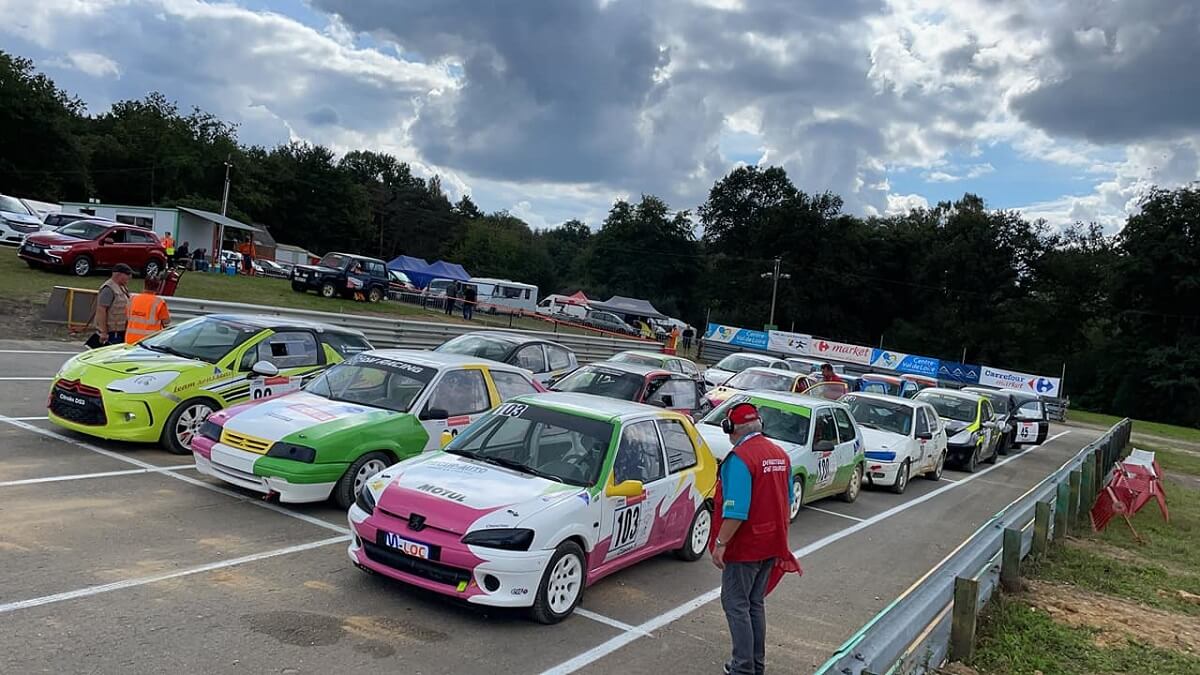
Qualifying heats
Each car runs four qualifying heats, but how that’s split depends on the entry format:
- Two drivers (A and B): each one drives two heats — for example, heats 1A and 2A for Driver 1, and 1B and 2B for Driver 2.
- Single driver: that driver runs all four heats.
Each heat is run over 9 laps 🔥
Points are awarded based on finishing position in each series: 16 points for first, 15 for second, and so on down to 1 point for a DNS.
ℹ️ The overall qualifying classification is based on the total points scored by both drivers (or by the solo driver in the case of a single-driver entry). This final ranking then sets the starting grids for the finals.
A reconnaissance lap may be done before each start, with no overtaking allowed.
Finals
The top 45 cars qualify for the finals, which are divided into three groups: Final A, Final B and Final C, with 15 cars per race.
- Final C: 9 laps
- Final B: 10 laps
- Final A: 11 laps
Starts are given with lights, and pole position gets to choose their exact grid slot on the front row.
ℹ️ The final result is based on the combined performances of both drivers in the same car, or the solo driver’s results if the car is entered by only one driver.
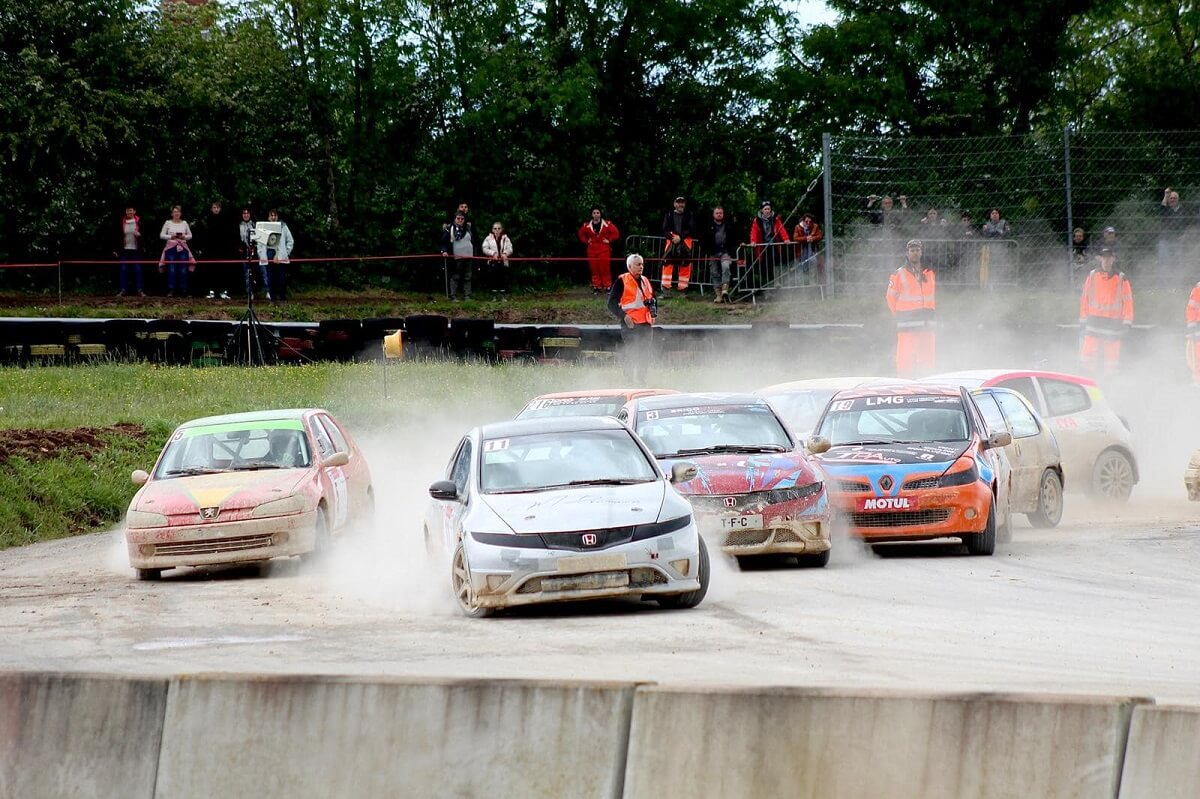
Building a Fol’Car: regulations, budget and popular base cars
Fol’Car is built on one simple principle: race with what you’ve got. Cars must come from mass-produced road cars, built at more than 1,000 units per year. Only two-wheel-drive touring/road cars are allowed, with a naturally aspirated engine up to 2 litres ⚙️
ℹ️ Turbo engines, viscous couplers and limited-slip differentials are banned, in order to keep costs under control and maintain reliability.
However, it is allowed to replace an original turbo engine with a naturally aspirated engine from the same brand, provided it stays within the “touring” philosophy of the regulations 😉
👉 For example, some Citroën DS3 Fol’Car builds run a Peugeot 206 RC engine — a naturally aspirated unit that’s reliable, easy to source and fully compliant 😎
This mechanical flexibility allows many road cars to be recycled and helps keep budgets reasonable, without betraying the grassroots spirit of the discipline.
The regulations also define a minimum weight based on displacement:
- Up to 1400 cc: 700 kg minimum
- Up to 1600 cc: 800 kg minimum
- Up to 2000 cc: 850 kg minimum
- +50 kg for multi-valve engines ⚖️
ℹ️ Convertibles, pick-ups and right-hand-drive cars are not allowed 🚫
Cars must retain their original silhouette, but it’s allowed to strip out trim, insulation and non-essential accessories — which lets you reduce weight while keeping the production-car spirit.
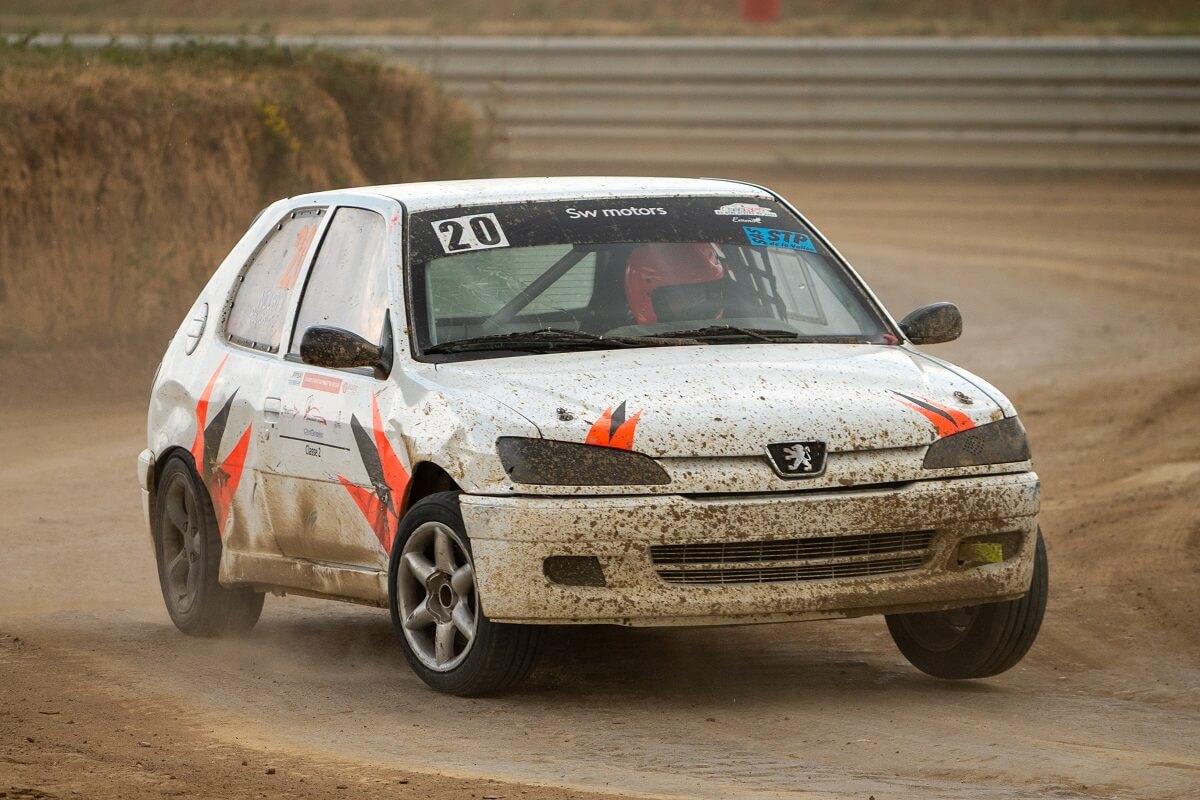
Tyres are also strictly regulated.
Only mass-market road tyres listed in a manufacturer’s consumer catalogue are allowed. Slicks, moulded slicks, knobbly tyres, agri-style tyres or off-road treads are banned, as are semi-slicks, racing or motorsport tyres — even if they’re technically road legal ❗
In practice, the most common tyres in Fol’Car are Michelin Pilot Sport 3, appreciated for their all-round performance on mixed surfaces, and Uniroyal RainSport, which work extremely well on 100% dirt thanks to their evacuation capacity and consistent grip 👌
Track-width spacers are also banned, to avoid an escalation in chassis trickery.
On the safety side, the rulebook is strict: approved roll cage, FIA 6-point harness, bucket seat, fire extinguisher, master cut-off and towing points are all mandatory 👍
Each car must also have an FFSA technical passport certifying that it complies with the rules. This mix of mechanical simplicity and safety requirements helps keep the cost of running the car at a reasonable level.
Many competitors build their own car from a budget-friendly base like a Peugeot 106, Citroën Saxo, Renault Clio, 306, 206 or Xsara. Others prefer to buy a car already built and ready to race, often found in the paddock, in Facebook groups or via specialist sites.
➡️ See all Fol'Car race cars for sale on GoToTheGrid 😋
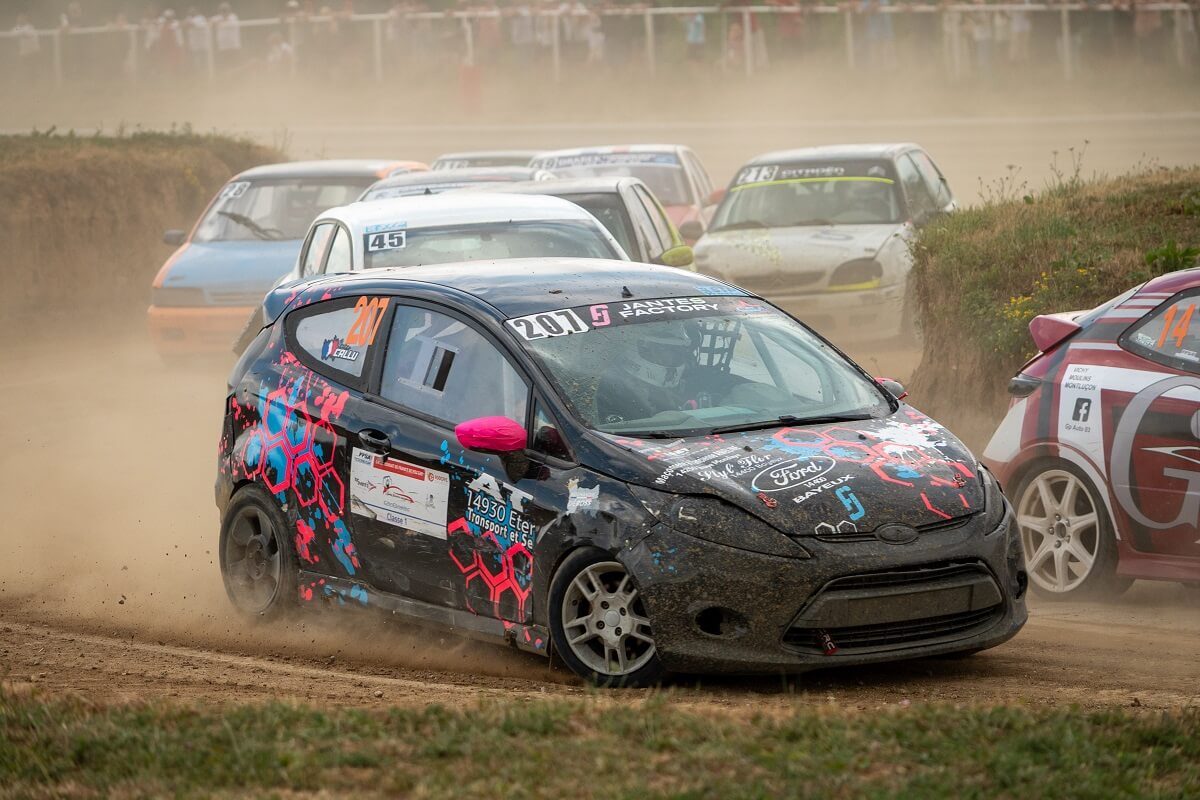
The three official classes of the French Fol’Car Championship
The French Fol’Car Championship is structured around three main classes:
- Class 1: displacement ≤ 1600 cc. Open to lightweight cars like Saxo VTS, 206 XS, Honda Civic EK4, 106 S16, as well as cars like Twingo, Fiesta R1 and Dacia Logan Cup, admitted under specific conditions (bumpers and tyres must comply with Fol’Car regulations).
- Class 2: displacement > 1600 cc up to 2000 cc, featuring more powerful cars such as Peugeot 306 S16, Civic EP3 or Renault Clio RS.
- Class 3: specific technical configurations. Introduced in 2025, this new category brings together cars that match specific technical criteria set by the FFSA, to allow a wider range of models while keeping a homogeneous regulatory framework.
ℹ️ The benchmark car remains the Honda Civic FN2, which has become a true reference in the discipline. It’s not unusual to see more than ten of them at a single event: its balance, reliability and the availability of parts make it a lethal base 😈
All three classes share the same track, which creates mixed grids that are often spectacular: small-displacement cars race alongside the bigger ones, and sometimes driving skill makes up for engine power 💪
This structure guarantees variety on the grid while maintaining sporting fairness. The cars stay close to production, and engine work is deliberately limited: yes, you can play with engine specs within the limits of the rules (head work, camshafts, internal adjustments), but the real secret to performance lies elsewhere 🤫
Suspension, ride height and chassis setup are critical. A stable, balanced and consistent car will often beat a more powerful one.
Racing with two drivers: a Fol’Car trademark
The rules allow — and even encourage — entries with two drivers sharing the same car. This unique format helps split costs and doubles the seat time. Each driver gets their own qualifying heats and final, and the overall result at the end of the weekend is calculated by combining both drivers’ points.
The concept is simple: drive more, spend less, and live the weekend as a team 🧑🤝🧑
ℹ️ In practice, nearly half the grid chooses this so-called “double entry” format.
Some do it for budget reasons, to split entry fees and running costs; others because a Fol’Car weekend is extremely intense. Sharing the car lets you manage fatigue, keep the car in good shape, and enjoy a full two-day event in a friendly, shared atmosphere 🥳
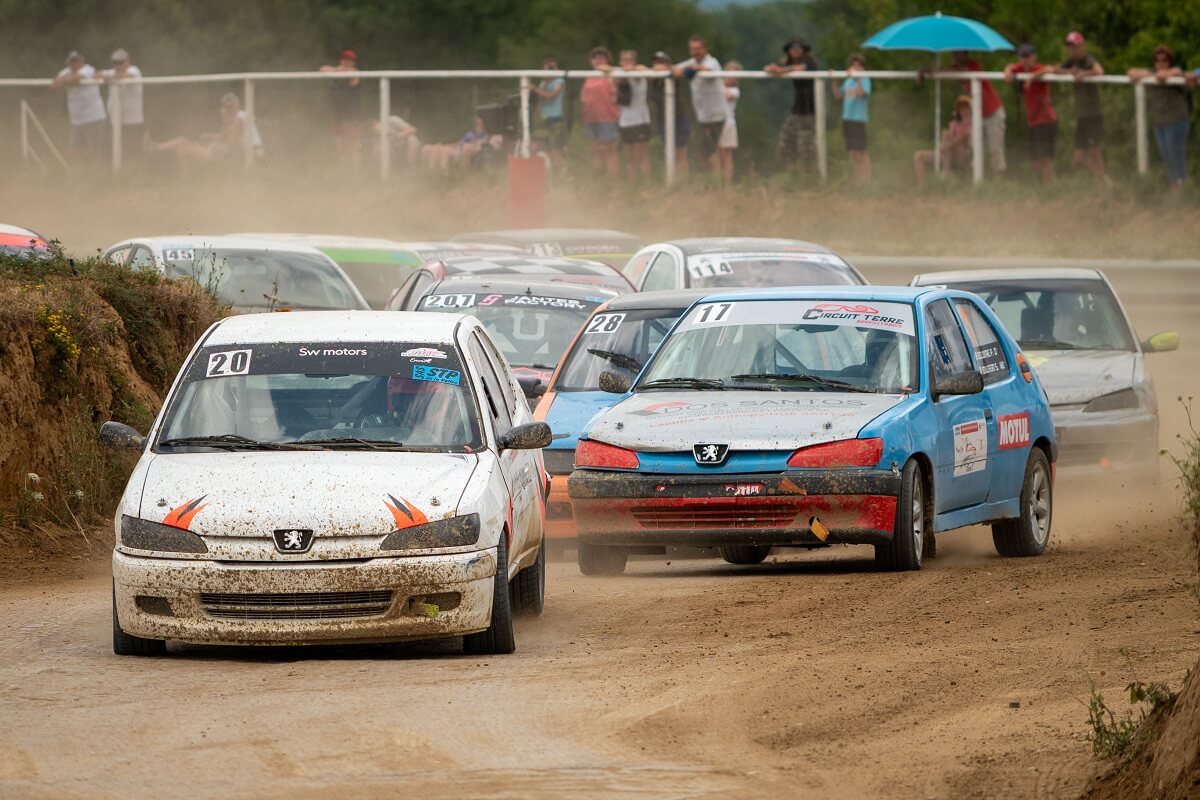
📅 Fol’Car 2025 calendar: dates, tracks and rounds of the French Championship
The 2025 French Fol’Car Championship will take place over seven rounds between April and October. As usual, the season will visit several iconic dirt circuits already familiar to fans, often shared with 2CV Cross.
There is also a strong concentration of rounds in the middle regions of France, which reflects the historic heartland of the discipline and the density of suitable dirt circuits there.
- 5-6 April 2025 – Pont-de-Ruan / Saché (Indre-et-Loire)
Organiser: ASA Perche & Val de Loire. A flowing, rolling track in the heart of Touraine that traditionally opens the season. - 24-25 May 2025 – Sougy (Loiret)
Organiser: ASA du Loiret. One of the most active tracks in the Loire Valley region, which actually hosts two rounds this year, including one late in the summer. - 28-29 June 2025 – Laonnois (Aisne)
Organiser: ASA 59 Hautmont. A return to the origins, in the very region where Fol’Car was born, on a “fast dirt” style circuit that’s very popular with drivers. - 12-13 July 2025 – Servilly (Allier)
Organiser: ASA du Val d’Allier. A summer round paired with 2CV Cross, on a flowing track with a varied profile. - 5-7 September 2025 – Sougy (Loiret)
Organiser: ASA du Loiret. The season’s second visit to the same venue — this time for an autumn round that’s often decisive in the championship. - 20-21 September 2025 – Allogny / Bourges (Cher)
Organiser: ASA du Centre. A selective and demanding track, known for its long, packed-dirt sweepers. - 4-5 October 2025 – Châteauroux – Saint-Maur (Indre)
Organiser: ASA du Berry. A complete, fast circuit, ideal for hosting the French Championship finale.
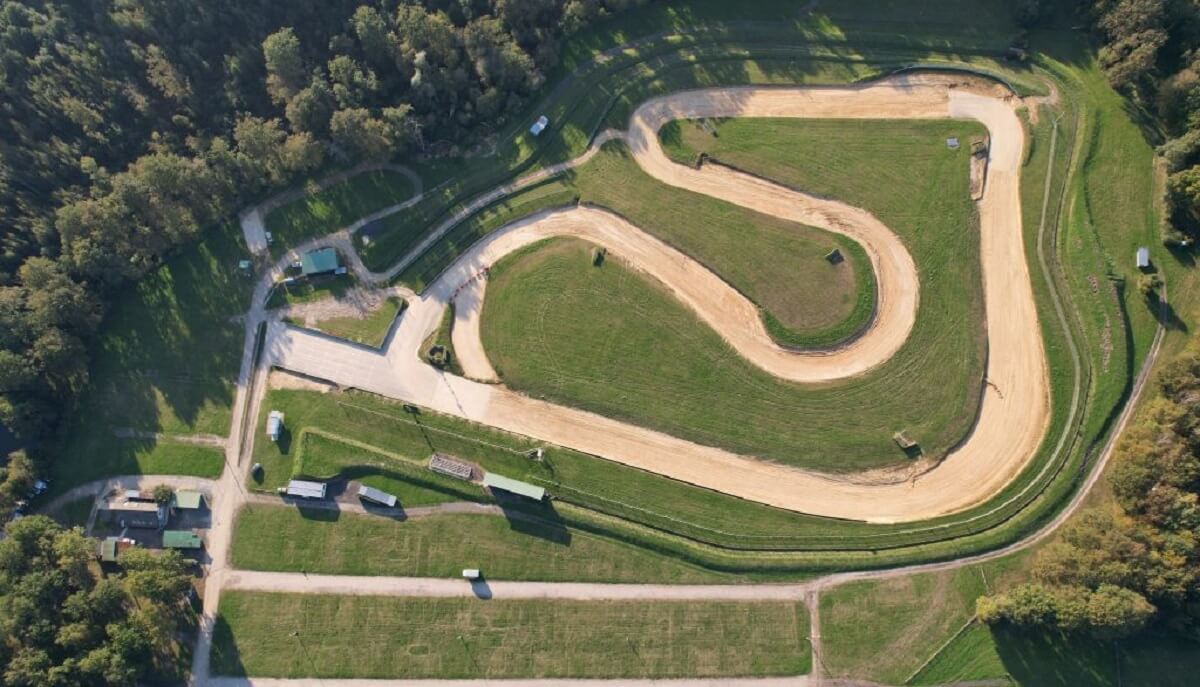
ℹ️ Note that 100% dirt circuits count with a coefficient of 2 in the championship. These rounds are worth double points in the overall standings, which makes them crucial for the title. This is often where gaps are created — where surface grip management and precision driving really make the difference.
Outside of the French Championship, the modern Fol’Car calendar is now very focused. The only event organised outside the championship is the Fol’Car Club de Mayenne, which takes place every year at the end of October on the Circuit Maurice-Forget. This friendly, end-of-season event is hugely appreciated by drivers, as it lets them extend the year in a more relaxed atmosphere — while still attracting a fully packed grid 😎
Also, FFSA-homologated Fol’Car cars are allowed to enter UFOLEP events, since the regulations are compatible. The reverse is not always true though: some UFOLEP-prepared cars don’t fully meet FFSA technical requirements 😐
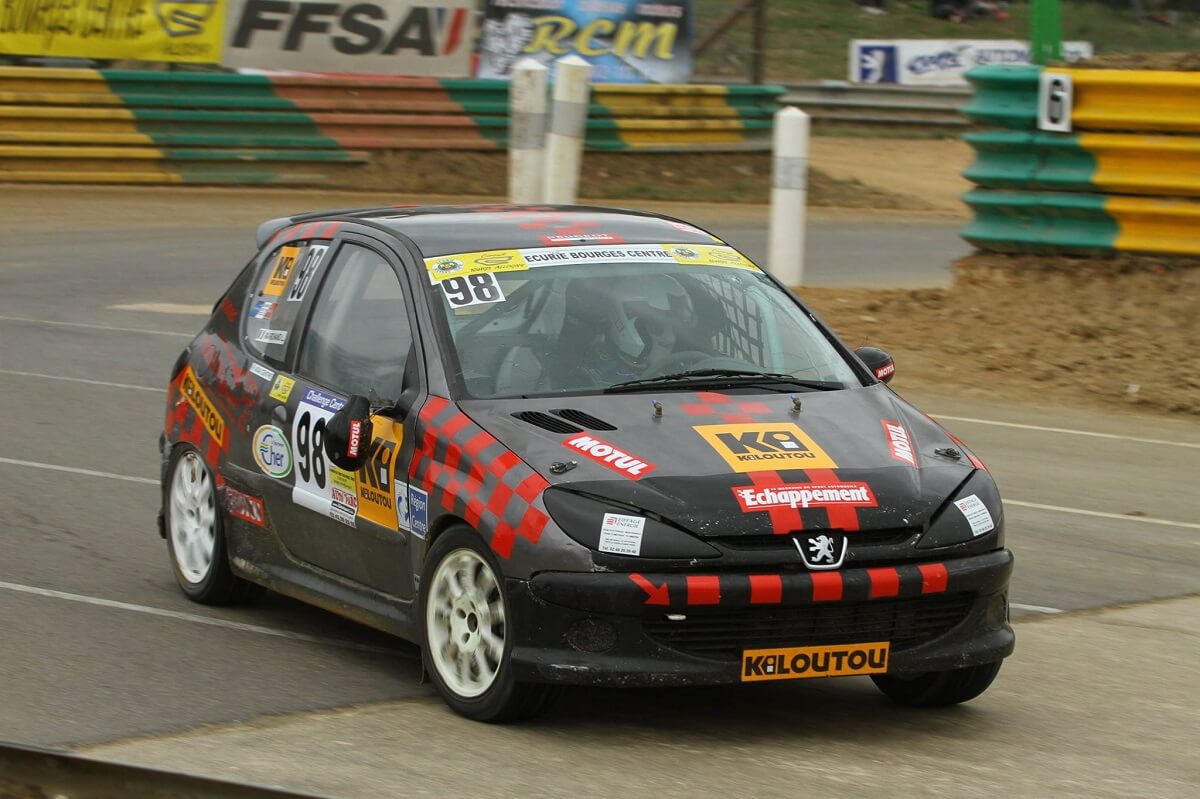
Budgets: how much does a Fol’Car season cost?
Just like in 2CV Cross, Fol’Car is popular because of its unbeatable cost/fun ratio 😍. The initial spend mainly depends on whether you buy, build or rent.
Buying a race-ready car
Used Fol’Car builds are generally found between €4,000 and €10,000, depending on condition, engine freshness and level of preparation.
The newest or best-sorted cars can go past €12,000, and a competitive Honda Civic FN2 usually sells for around €15,000. Those figures are still very reasonable considering the reliability and fun you get for the money 👍
Building your own Fol’Car
Starting from a cheap donor (Saxo, Clio, 205…), a capable hobbyist can build a full car for €3,000 to €7,500.
ℹ️ Original shell, roll cage, safety gear, reinforced suspension and a refreshed engine are generally enough to obtain FFSA homologation — provided you comply with the technical regulations and mandatory safety points.
Renting a drive from a team
Unlike rally, rallycross or circuit racing, there are very few teams renting out Fol’Car cars, especially in Class 1.
Also read: "How much does it cost to hire a rally car ?"
The few teams offering “arrive and drive” packages typically charge around €1,000 incl. VAT for a weekend in Class 1, and up to €2,000 incl. VAT in Class 2.
These packages usually include the car, transport, mechanical support and consumables: a great way to try the discipline without a huge initial investment 💸
But be warned: Fol’Car is still a contact sport 🛠️.
You’ll need to provide a damage deposit, and the driver is responsible for mechanical failures or bodywork damage. Even if the atmosphere is friendly, risk is part of the game — and that’s also what keeps the discipline so alive and spectacular.
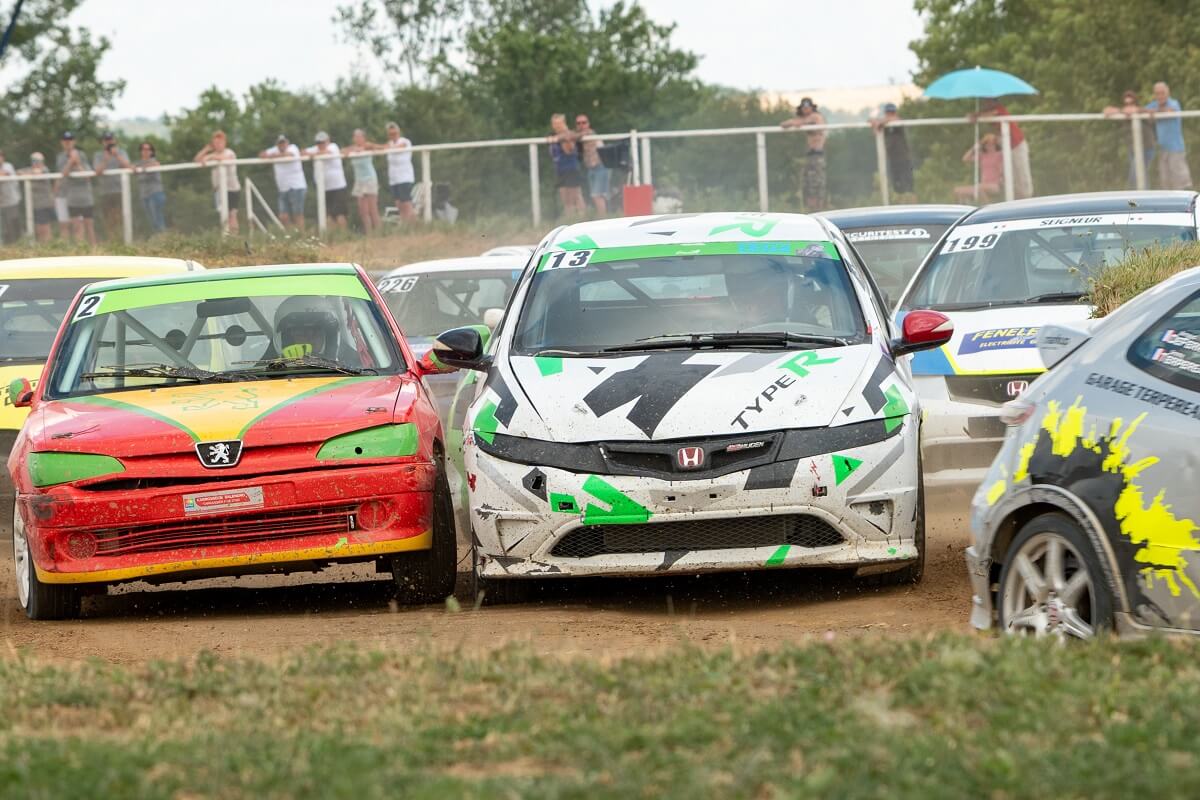
The budget to enter a Fol’Car race weekend with your own car
For drivers who own and run their own car, a Fol’Car weekend can still be done on a contained budget:
- Around €700 to €800 all-inclusive in Class 1
- About €1,000 in Class 2, depending on travel and wear and tear
Those amounts include FFSA race entry (€170 per round, or €140 for registered Championship entrants), fuel, tyres, minor repairs and travel costs 💶
The FFSA RCCT licence costs €113 per year, plus the ASA membership fee (varies by association). Overall, a full 7-round season can be done for €6,000 to €7,000, depending on class and travel distance 👌
That’s very similar to 2CV Cross — which makes sense, since both disciplines often share the same venues and same race weekends.
Prizes and payouts
Even though prize money obviously doesn’t cover a full season of costs, each event distributes €1,140 in payouts, split fairly among the three classes (i.e. €380 per category).
The payout scale is:
- 1st: €150
- 2nd: €130
- 3rd: €100
It’s not huge, but it helps. That money often covers part of the weekend’s cost — a tank of fuel, a set of tyres, or just the Sunday night BBQ back in the paddock 🔥🍗
At the end of the season, a total prize fund of €6,800 is also awarded by the FFSA as part of the French Fol’Car Championship.
It rewards the top drivers in each class according to the following scale:
Classes 1 and 2:
- 1st: €700
- 2nd: €600
- 3rd: €500
- 4th: €400
- 5th: €300
Class 3 (provided there are at least 10 classified drivers, which is not the case in 2025):
- 1st: €700
- 2nd: €600
- 3rd: €500
Again, those amounts don’t change the economics of a season, but they’re a nice official recognition of performance — and a welcome boost for those maintaining their own cars 🧑🔧
Fol’Car vs Rallycross: two sister disciplines
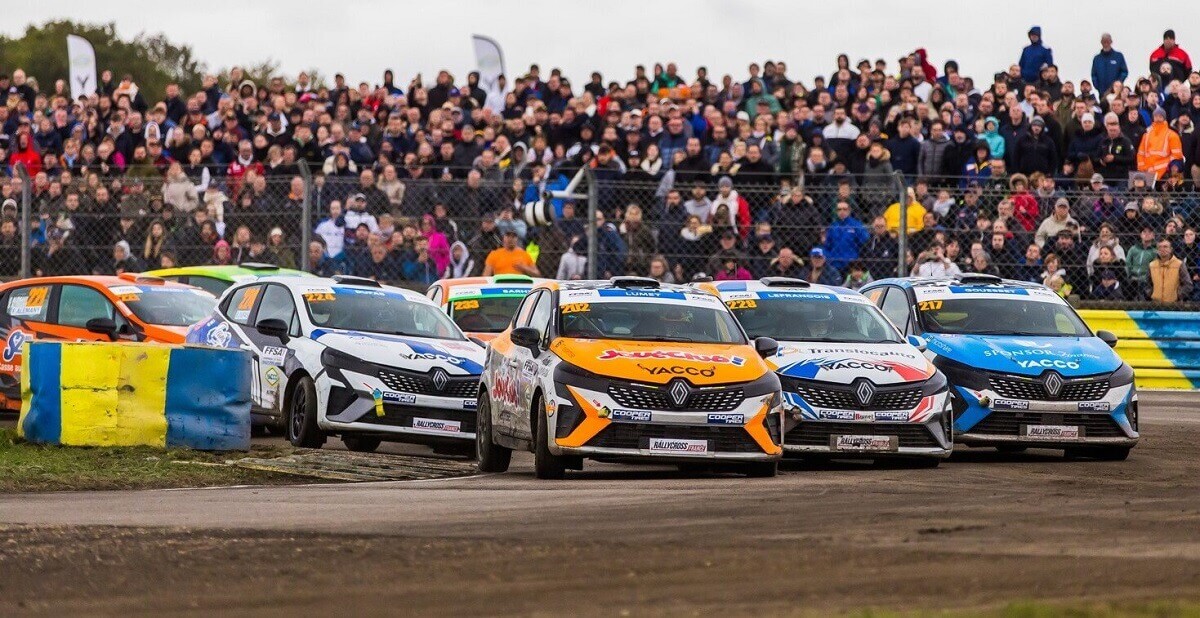
The similarities are obvious: mixed surfaces, pack starts, short heats and joker laps. But the differences are just as significant:
- The cars: in rallycross, RX1 or RX3 cars can make over 300 hp, whereas in Fol’Car you’re generally running stock-ish naturally aspirated engines between 100 and 200 hp depending on the base car.
- The budget: a full rallycross season can exceed €80,000, versus around €5,000 to €6,000 in Fol’Car.
- The race craft: Fol’Car rewards pure driving and track-reading more than outright power.
- The atmosphere: more relaxed and friendly, with fewer big professional structures and less sponsor pressure — this is proudly an amateur environment, where helping each other still matters more than cut-throat rivalry 😊
Fol’Car is therefore often seen as an ideal stepping stone towards rallycross: you learn grip management, traffic management and joker-lap strategy, without the financial and logistical burden of a professional discipline.
Why try Fol’Car?
Because it is arguably the purest and most accessible form of off-road car racing in France.
You don’t need crazy equipment or a massive budget: a prepared production car, a roll cage, a helmet and passion are enough to get you on the grid 🏁
The sensations are immediate, overtaking is constant, and you’re sliding most of the time.
For a young driver, it’s a complete driving school: grip, weight transfer, track reading, anticipation… all the basics you need to progress to rally, rallycross or circuit racing.
For an enthusiast, it’s simply pure racing fun without going broke 👍
Conclusion
Fol’Car is everything grassroots motorsport should be: accessible, educational and deeply human ❤️.
Born in the dirt of Folembray, it has managed to keep the original spirit alive while becoming more structured over time. Today, it brings together hundreds of drivers every year, from every region and every generation, all united by the same passion: driving fast, hard, and together.
Whether you come for a single race or a full season, Fol’Car remains one of the best gateways into motorsport. It proves you can still go racing with reasonable means, a lot of passion, and yes — a healthy amount of dust 😎
ℹ️ Many thanks to Hervé Durou and Dylan Callu for their time and answers, which helped complete this article with accuracy and clarity 🙏

